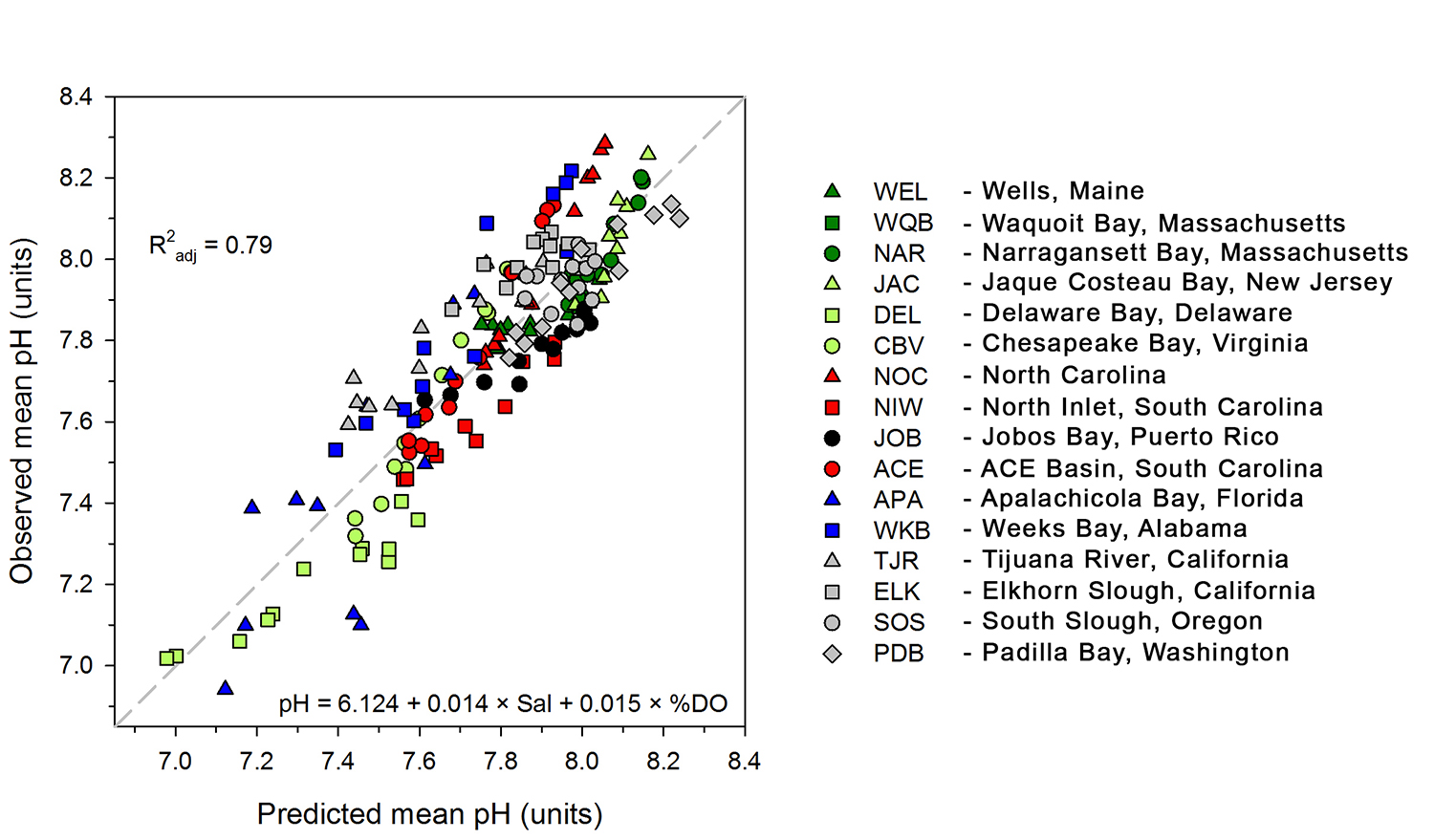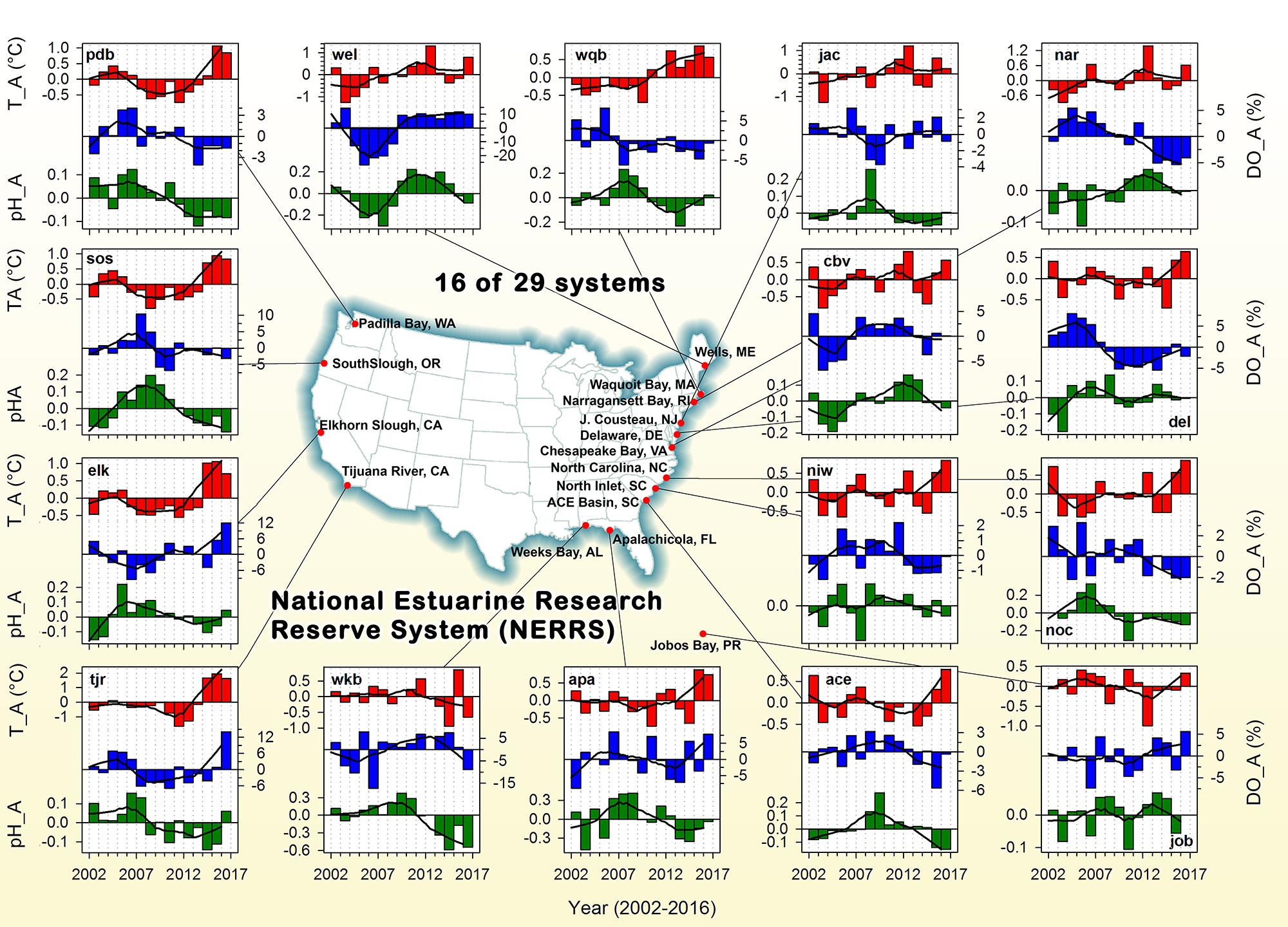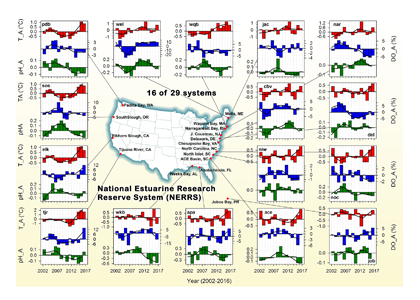Coastal habitats are critically important to humans, but without consistent and reliable observations we cannot understand the direction and magnitude of unfolding changes in these habitats. Environmental monitoring is therefore a prescient—yet still undervalued—societal service, and no effort better exemplifies this than the work conducted within the National Estuarine Research Reserve System (NERRS). NERRS is a network of 29 U.S. estuarine sites operated as a partnership between NOAA and the coastal states. NERRS has established a system-wide monitoring program with standardized instrumentation, protocols, and data reporting to guide consistent and comparable data collection across all NERRS sites. This has resulted in high-quality, comparable data on short- to long-term changes in water quality and biological systems to inform effective coastal zone management.

Figure 1: Using dissolved oxygen and salinity, monthly mean pH can be predicted within and across coastal systems due to the unifying metabolic coupling of oxygen and pH.
In a recent study published in Estuaries and Coasts, Baumann and Smith (2017) used a subset of this unique data set to analyze short- and long-term variability in pH and dissolved oxygen (DO) at 16 NERRS sites across the U.S. Atlantic, Caribbean, Gulf of Mexico, and Pacific coasts (> 5 million data points). They observed that large, metabolically driven fluctuations of pH and DO are indeed a unifying feature of nearshore habitats. Furthermore, mean pH or mean diel pH fluctuations can be predicted across habitats simply from salinity and oxygen levels/fluctuations (Fig.1). These results provide strong empirical evidence that common metabolic principles drive diel to seasonal pH and DO variations within and across a diversity of estuarine environments. As expected, the study did not yield interannual, monotonic trends in nearshore pH conditions; rather, interannual fluctuations were of similar magnitude to the pH decrease predicted for the average surface ocean over the next three centuries (Fig.2). Correlations of weekly anomalies of pH, oxygen, and temperature yielded strong empirical support for the hypothesis that coastal acidification—in addition to being driven by eutrophication and atmospheric CO2 increases—is exacerbated by warming, likely via increased community respiration.

Figure 2: Interannual variations in temperature, pH, and dissolved oxygen (DO) anomalies in 16 NERRS sites across the US Atlantic, Gulf of Mexico, Caribbean, and Pacific coasts.
Analyses of these long-term data sets have provided important insights on biogeochemical variability and underlying drivers in nearshore environments, highlighting the value and utility of long-term monitoring efforts like NERRS. Sustained, high-quality data sets in these nearshore environments are essential for the study of environmental change and should be prioritized by funding agencies. The observed metabolically driven pH and DO fluctuations suggest that local measures to reduce nutrient pollution can be an effective management tool in support of healthy coastal environments, a boon for both the habitats and humans.
Authors:
Hannes Baumann (University of Connecticut)
Erik M. Smith (North Inlet-Winyah Bay National Estuarine Research Reserve, University of South Carolina)





